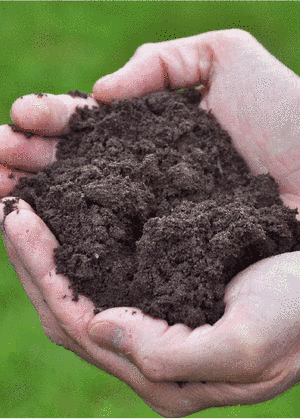Introduction
Soil testing has been used effectively over the years in determining the availability of nutrients for plants. Nitrogen is one of these essential nutrients, which is converted to amino acids and then utilized in producing necessary enzymes and structural parts of the plant.
The LAQUAtwin Nitrate Ion meter can be used to measure NO3-N concentration in soil samples. It is an easy-to-use pocket-sized meter that provides quick results for on-site testing, thus eliminating the need to transport samples to a laboratory for colorimetric or chromatography analysis performed by trained analyst.
Method
Sample Collection and Preparation

- Collect dry soil samples and pass through a 2 mm sieve.
- Prepare soil extract by mixing soil and water or extractant in 1:5 ratio (e.g., 5 g soil and 25 mL water or extractant). Shake for 1 minute. Allow the sample to settle for 5 minutes or filter it using filter paper and funnel.
Calibration
Calibrate the LAQUAtwin Nitrate Ion meter using two NO3-N calibration standards according to manufacturer’s instructions. Make sure that the meter measurement unit is set to ppm NO3-N.
Sample Measurement
- Place some drops of unused water or extractant into the sensor.
- Record the reading as the blank. Blank is only required once for each batch of samples.
- Rinse the sensor with water and blot it dry with tissue.
- Place some drops of clear liquid taken from the top layer of soil extract (or filtrate, if filtered sample).
- Record the reading once stabilized.
- After each sample, rinse the sensor with water and blot it dry with tissue.
Results and Benefits
To express the results in NO3-N mg/kg in soil, use the formula: NO3-N mg/kg in soil = (soil extract reading - method blank) ppm NO3-N × 5. If a different ratio is used in soil extract, substitute ‘5’ with the appropriate ratio.
Nitrate-nitrogen (NO3-N) measures the amount of available nitrogen in the soil that can be absorbed immediately by plants. The amount required in the soil for specific crops varies from crop to crop, but in general the levels should not fall below 10 mg/kg and should not exceed 50 mg/kg. However, nitrate varies with soil water and so levels can fluctuate widely depending on soil water movement.

Figure 1: Guide to the interpretation of nitrate-nitrogen values for soils (Source: Soil health for vegetable production in Australia—Part 4)
To determine the amount of nitrogen fertilizer needed to meet crops’ demand, the NO3-N concentration is being subtracted from the nitrogen requirement of the crop.
Supplementary Information
- Soil – Wet samples will need to be air dried by spreading thin layer of soil in a sheet of plastic under the sun. This is to eliminate the effect of the soil’s moisture content. Samples that have too much clay will need to be crushed.
- Extractant - Water or dilute salt solutions can be used to extract nitrate from most soils because essentially all the nitrate in soils with low anion exchange capacities is water soluble. The main disadvantage of water is its low ionic strength which can cause dispersion and result in cloudy filtrates. Extractants containing chloride cause problems if NO3-N is measured by ion chromatography or ion selective electrode because chloride can interfere with analysis of NO3-N by these methods. 0.04M ammonium sulfate, (NH4)2SO4 is the preferred extractant for nitrate selective electrode (Griffin et al., 1995). Other extractants include 0.025M Al2(SO4)3, 1% KAl(SO4)2, 0.025M Al2(SO4)3 – 0.025M Ag2SO4 – 0.005M H3BO3 (pH 3), 0.01M CuSO4, 0.2% or saturated CaSO4, 0.01M sodium citrate and 0.05M K2SO4 (Thomas, 1986).
- Nitrate standard – Check the NO3-N concentration indicated on the label of nitrate standard when calibrating NO3-N (e.g., 150 ppm NO3- standard is 34ppm NO3-N).
- Measurement unit – The nitrate meter can be set to ppm (equivalent to mg/L) NO3- or NO3-N. Refer to meter manual for the measurement unit setting. If the meter measurement unit is set to ppm NO3-N and 150 ppm NO3- standard is placed onto the sensor, 34ppm NO3-N reading will be displayed during calibration.
References
- Bagshaw, J., Moody, P., and Pattison T., (2010) Soil health for vegetable production in Australia—Part 4: Measuring soil health. The State of Queensland, Department of Employment, Economic Development and Innovation
- Geisseler, Daniel and Horwath, William. Sampling for Soil Nitrate Determination. Fertilizer Research and Education Program.
- Griffin, G., Jokela, W., Ross, D., Pettinelli, D., Morris, T., and Wolf, A. (2009). Chapter 4 Recommended Soil Nitrate Tests. Recommended Soil Testing Procedures for the Northeastern United States. Cooperative Bulletin No. 493.
- Thomas, J. (1986). Ion Selective Electrode Reviews, Volume 7. UK: Pergamon Press
REV 0, 4 AUGUST 2015




